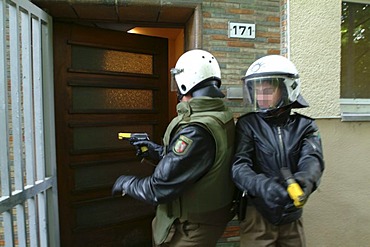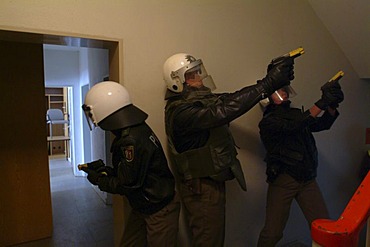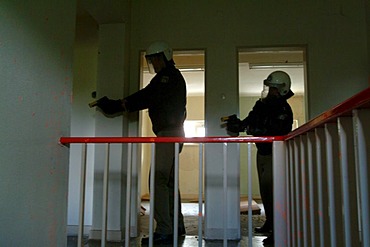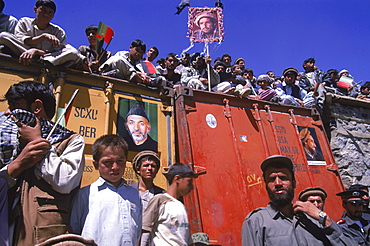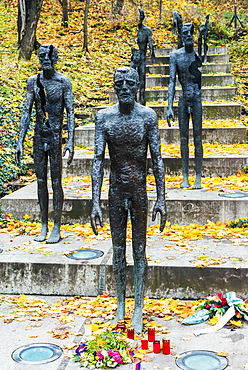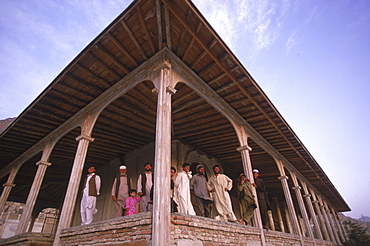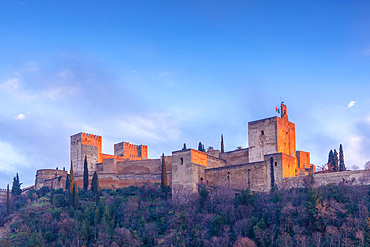Recent searches
Loading...
225-3568 - Hampton Court Palace Flower Show 2002, Hampton Court, England, United Kingdom, Europe
225-3569 - Hampton Court Palace Flower Show 2002, Hampton Court, England, United Kingdom, Europe
727-830 - Dai woman cooking at market stall (ethnic minority group) Xishuangbanna, Yunnan, China. 2002
727-833 - Red panda fur hats worn by Yi people (ethnic minority) in winter. Lijiang, Yunnan, China. 2002
712-2002 - Tobacco harvest, Vinales Valley, Pinar Del Rio province, Cuba, West Indies, Central America
586-1426 - Esplanade Theatres on the Bay and Concert Hall centre for performing arts, durian shaped dome roof with aluminium sunshades, opened 2002, Marina Bay, Singapore, Southeast Asia, Asia
832-317863 - DEU, Germany, Essen : German police officer in a training situation where they learn to act in a madman situation. They should fight the gunman first before they look after victims. This is a result after a madman shooting in an Erfurt school in 2002 with
832-317865 - DEU, Germany, Essen : German police officer in a training situation where they learn to act in a madman situation. They should fight the gunman first before they look after victims. This is a result after a madman shooting in an Erfurt school in 2002 with
832-317864 - DEU, Germany, Essen : German police officer in a training situation where they learn to act in a madman situation. They should fight the gunman first before they look after victims. This is a result after a madman shooting in an Erfurt school in 2002 with
557-2002 - The ribbed dome, tiles and Arabic script on the Bibi Khanym Mosque in Samarkand, Uzbekistan, Central Asia, Asia
817-65194 - Hand of volunteer dressed with protective clothing to gather the fuel spill ('chapapote') of Prestige tanker, Dec, 2002, Galicia, Spain
817-65200 - Volunteers dressed with protective clothing gathering the fuel spill ('chapapote') of Prestige tanker, Dec, 2002, Galicia, Spain
817-65199 - Volunteers dressed with protective clothing to gather the fuel spill ('chapapote') of Prestige tanker, Dec, 2002, Galicia, Spain
817-65178 - Soldiers dressed with protective clothing cleaning up the oil spill ('chapapote') from Prestige tanker, Dec, 2002, Costa da Morte, A Coruna province, Galicia, Spain
817-65206 - Volunteer dressed with protective clothing to gather the fuel spill ('chapapote') of Prestige tanker, Dec, 2002, Galicia, Spain
817-65161 - Recuperation of marine birds after the fuel spill ('chapapote') of Prestige tanker, Dec, 2002, Pontevedra province, Galicia, Spain
817-152328 - Atlantic Puffin (Fratercula arctica) after the fuel spill ('chapapote') from tanker Prestige, Dec, 2002, Spain
817-183672 - Much of northwestern Europe is shown in this true-color Aqua MODIS image from September 13, 2002
817-183671 - An unusually cloud-free France shows green and tan in this true-color Moderate Resolution Imaging Spectroradiometer (MODIS) image acquired August 14, 2002, by the Terra satellite
817-183673 - Airplane tracks crisscross the skies over the Bay of Biscay and the Atlantic Ocean (left) in this true-color Moderate Resolution Imaging Spectroradiometer (MODIS) image of France (right), Spain (bottom), England (top) on September 29, 2002
765-2002 - Facade of St. Peter's Basilica, Piazza San Pietro, Vatican City, UNESCO World Heritage Site, Rome, Lazio, Italy, Europe
834-2002 - Girls dressed in traditional Vietnamese costume, Ho Chi Minh City, Vietnam, Indochina, Southeast Asia, Asia
857-70414 - Jen Dwyer holds a photograph of her grandmother while taking part in the All Souls Procession in Tucson, Arizona, November 6, 2002. Inspired by Mexico's Dia de los Muertos holiday, over 10,000 participants gather on the streets of downtown Tucson for a two-mile long human-powered procession that ends in the finalizing action of burning a large urn filled with the hopes, offerings and wishes for those who have passed.
857-33973 - Men and boys on bikes ride past a towering, ancient minaret, outside of Ghazni, Afghanistan, October 1, 2002. Made of brick decorated with Kufic and Naksh Script and floral motifs, the minaret dates back to the early 12th century and was built by Sultan Masud III of the Ghaznavid Dynasty, who ruled over an empire encompassing much of Afghanistan, Northern India, Persia and Central Asia. The minaret was once three times as tall as its current 70 feet, and is thought to have been part of a large mosque complex. Now an important truck stop on the road to Kandahar, Ghazni, located on the Lora River at the elevation of 2,225 meters, is the capital of Ghazni province and is a market for sheep, wool, camel hair cloth, corn, and fruit-it also continues to be a haven for Taliban insurgents.
857-34024 - Young boys on donkeys watch over flocks of goats, sheep and donkeys near the top of the Shebar Pass, which crosses into the Province of Bamiyan. Due to a devastating drought in the region, dry wheat farming has failed for three years from 1998-2002 and the forage is extremely sparse, The pass is a strategic point leading into the Central Highlands, the Koh-i-Baba range and the Hazarajat, at the end of the Hindu Kush. Most of the people of this region are of the Hazara tribe, and are Shi'a Moslems who have been persecuted for centuries by many of the Pashtun rulers of Afghanistan, who are from the Sunni sect.
857-34122 - Climbers make their way to Advanced Basecamp (ABC) through the massive Western Cwm (glacial valley) on the Southeast Ridge route on Mt. Everest, Nepal. Everest's Southwest Face rises to the left with Lhotse and the Lhotse Face in the distance. Jake Norton, 4, 20, 2002, Western Cwm, Everest, Nepal.
857-33946 - Hundreds of men and boys pray during ceremonies at the shrine of Ahmad Shah Masood in the Panjshir Valley, on the one year anniversary of his assasination, September 9, 2002.. Masood was a revered mujahedin leader who also was one of the leaders of the Northern Alliance which opposed the Taliban and helped the US Military in their defeat. Masood was assasinated by what are thought to be Al Queda operatives on Sept. 9, 2001. A shrine has been erected in the Panjshir Valley from where he led much of his resistance to both the Soviet and Taliban forces, to honor this latest of Afghan war heros.
857-33933 - Women in burqas flock like doves to the entrance of the main mosque at the Blue Mosque complex, Mazar-i-Sharif, Balkh Province, September 23, 2002. Wednesday mornings are reserved for women to come and worship at the mosque.Elaborate tilework and decorated spires adorn the mosque, also known as the Shrine of Hazrat Ali (Hazrat Ali was the son-in-law of the prophet Mohammed), who is believed to be buried here. The shrine, of particular importance for Afghanistan's Shi'ite Muslims, was first built in the 12th century, destroyed by Genghis Khan, and rebuilt in 1481. The current mosque, considered by some to be one of the most beautiful in Central Asia, is a modern restoration.
857-33938 - A Tajik woman holds a baby with kohl rimmed eyes, in the compound of an extended, traditional family in Mazar-i-Sharif, Balkh Province, September 25, 2002. The Tajik are one of the larger ethnic groups in Afghanistan, second only to the Pashtun people.
857-33955 - Tajik farmers and their families thresh wheat with oxen and donkeys, in a side valley to the Panjshir Valley, in the Hindu Kush mountains, September 10, 2002. Agriculture is primitive and labor intensive in this remote valley. The Panjshir Valley and its side valleys have long been a stronghold for the Tajik people, and the famous commander Ahmed Shah Masood, in their struggle first against the Soviets and then against the Taliban. The Tajik are one of the larger ethnic groups in Afghanistan, second only to the Pashtun people.
857-19509 - A famous local sandboarder trying to keep his balance 10 feet off the ground in the Ica Desert, Peru on June 25, 2002. Local kids in the Ica Desert, inspired by American snowboard videos, are creating a new sport and riding the highest dunes in the world. (photo by Olivier Renck, Aurora)
857-33992 - Striking Mongol features distinguish the face of Hamir Mohammed, his daughter and grandson (who is blind), all living in the ruins of the Qala-i-Dokthar (Daughter's Castle), outside of the town of Bamiyan, August 30, 2002. Most of the old town was destroyed and up to 20,000 people of the region might have perished when Bamiyan fell to the Taliban in 2001. Bamiyan Valley is located in the Hazarajat at the edge of the Koh-i-Baba range , the end of the Hindu Kush. Bamiyan was a prosperous Buddhist kingdom on the ancient Silk Road until the 10th century, when the region was converted to Islam; in the 12th century, it was destroyed by Ghengis Khan. Most of the people of this region are of the Hazara tribe, and are Shi'a Moslems who have been persecuted for centuries by many of the Pashtun rulers of Afghanistan, who are from the Sunni sect. They most recently suffered at the hand of the Taliban, who tried for years to ethnically cleanse the region of its Shi'a people
857-33969 - Men on bikes ride past an ancient brick minaret toward the old walls and citadel of the town of Ghazni, Afghanistan, October 1, 2002. Made of brick decorated with Kufic and Naksh Script and floral motifs, the minaret dates back to the early 12th century and was built by Sultan Masud III of the Ghaznavid Dynasty, who ruled over an empire encompassing much of Afghanistan, Northern India, Persia and Central Asia. The minaret was once three times as tall as its current 70 feet, and is thought to have been part of a large mosque complex. Now an important truck stop on the road to Kandahar, Ghazni, located on the Lora River at the elevation of 2,225 meters, is the capital of Ghazni province with a population of 35,900, and is a market for sheep, wool, camel hair cloth, corn, and fruit.
857-90997 - An unidentified lead ice climber tops out on frozen waterfall by a popular climbing area called Haffner Creek in Kootenay National Park, British Columbia on December 1, 2002 as its snows, Canada
1109-2002 - Amazon Jungle swinging rope bridge in Puerto Maldonado area, Peru, South America
857-33971 - Afghan men pause on the road with an ancient brick minaret and many shrines in the background, outside of Ghazni, Afghanistan, October 1, 2002. Made of brick decorated with Kufic and Naksh Script and floral motifs, the minaret dates back to the early 12th century and was built by Sultan Masud III of the Ghaznavid Dynasty, who ruled over an empire encompassing much of Afghanistan, Northern India, Persia and Central Asia. The minaret was once three times as tall as its current 70 feet, and is thought to have been part of a large mosque complex. Now an important truck stop on the road to Kandahar, Ghazni, located on the Lora River at the elevation of 2,225 meters, is the capital of Ghazni province with a population of 35,900, and is a market for sheep, wool, camel hair cloth, corn, and fruit, and continues to be a haven for Taliban insurgents.
857-33952 - Crowds of boys and men, holding posters of Ahmad Shah Masood and Afghan president Hamid Karzai, line the roofs of buildings during a ceremony in the Panjshir Valley on the one year anniversary of Masoods assasination, September 9, 2002. Thousands of people from all over Afghanistan and the world, including many important dignitaries, arrived in the Panjshir Valley for ceremonies honoring Masood, a revered mujahedin leader who also was one of the leaders of the Northern Alliance which opposed the Taliban and helped the US Military in their defeat. Masood was assasinated by what are thought to be Al Queda operatives on Sept. 9, 2001. The shrine to honor this latest of Afghan war heros was built in the Panjshir Valley as that is from where Masood led much popular resistance against both the Soviets and the Taliban forces.
857-34003 - A truck drives over a makeshift bridge supported by ruined tanks on the road north of the Salang Tunnel in Baghlan province, August 31, 2002. High in the mountains of the Hindu Kush, the road was destroyed several years ago by a flood from raging mountain rivers. The road was improved by the Soviets after their 1979 invasion of Afghanistan, and was a crucial link for troops and supplies coming from the Soviet Union. The mountain road is in terrible condition, and its repair is crucially important for the reconstruction of the country
1131-2002 - Morning fog on the Amana River, an Amazon tributary, Amazonas state, Brazil
1161-5784 - BMW 2002 TI car and Bubble Car Isetta 1955 on display at the BMW Museum and Headquarters in Munich, Bavaria, Germany
857-33945 - Men, soldiers and schoolboys carry banners and photos to the shrine in the Panjshir Valley of the famous Tajik commander, Ahmad Shah Masood, during a memorial on the one year anniversary of his assasination, September 9, 2002. Masood was a revered mujahedin leader who also was one of the leaders of the Northern Alliance which opposed the Taliban and helped the US Military in their defeat. Masood was assasinated by what are thought to be Al Queda operatives on Sept. 9, 2001. A shrine has been erected in the Panjshir Valley from where he led much of his resistance to both the Soviet and Taliban forces, to honor this latest of Afghan war heros.
737-717 - Monument to Victims of Communism between 1948 to 1989 (2002, Olbram Zoubek), Petrin Park, Mala Strana suburb, Prague, Czech Republic, Europe
857-33942 - Children play on a tank in the Panjshir Valley while waiting for ceremonies to begin in honor the one year anniversary of the assasination of Ahmad Shah Masood, September 9, 2002. The Panjshir Valley was a stronghold for the Tajik people and the famous commander Masood in their struggle first against the Soviets and then against the Taliban. The valley and villages of the Panjshir were subjected to heavy bombing and destruction during the Afghan-Soviet war, but was never fully occupied. Now it is the heartland for the powerful Tajik ethnic group, the second largest in Afghanistan, who came to partial power after the fall of the Taliban.
979-7139 - Chinstrap penguin (Pygoscelis antarctica) chick head detail at colony on Useful Island near the Antarctic Peninsula. There are an estimated 2 million breeding pairs of chinstrap penguins in the Antarctic peninsula region alone, perhaps as many as 7.5 million breeding pairs in all of Antarctica. Their name derives from the narrow black band under their heads which makes it appear as if they are wearing black helmets, making them one of the most easily identified types of penguin. Other names for them are "Ringed Penguins", "Bearded Penguins", and "Stonecracker Penguins" due to their harsh call. They grow to 68 cm (27 in). The average adult weight of a Chinstrap Penguin is 4.5 kg (10 lbs). Weight can range from 3 to 6 kg (6.6-13.2 lbs), with males being slightly larger and weight varying based on where the penguin is in the breeding cycle. Their diet consists of krill, shrimp, and fish. On land they build circular nests from stones, and lay two eggs, which are incubated by both the male and the female for shifts of five to ten days. They can also breed on icebergs, though they prefer non-icy conditions. The chicks hatch after about 35 days, and have fluffy gray backs and white fronts. The chicks stay in the nest for 20?30 days before they go to join a creche. At around 50?60 days old, they moult, gaining their adult plumage and go to sea. The Chinstrap Penguin was first described by German naturalist Forster in 1781. Its specific epithet was often seen as antarctica, however a 2002 review determined the genus Pygoscelis was masculine, and hence the correct binomial name is Pygoscelis antarcticus.
857-34008 - Workers pause by the columns of a 19th century summer pavilion in the Babur Gardens, or Bagh-i-Babur, Kabul, Afghanistan, September 25, 2002. The pavilion, which was used as a restaurant in the 20th century, was built by Amir Abdur Rahman, but was heavily damaged by the factional fighting of the mujihadeen in the 1990's and later by the Taliban. The buildings and gardens are now being carefully restored. Shah Babur, a descendent of Ghengis Khan and grandson of Tamerlane, is credited for founding the great Moghul dynasty which ruled India for two centuries. Babur built the palace and created the gardens on a hill looking over the southern part of Kabul in the 16th century,
747-1655 - The Falkirk Wheel, connecting the Forth Clyde Canal to the Union Canal, designed by Tony Kettle and opened in 2002, Falkirk, Scotland, United Kingdom, Europe
846-2002 - Mount Cook and Lake Pukaki, Mount Cook National Park, UNESCO World Heritage Site, Canterbury region, South Island, New Zealand, Pacific
857-34013 - Armed guards keep an eye on the crowds during a ceremony below the shrine of Ahmad Shah Masood in the Panjshir Valley, September 9, 2002. Masood was a revered mujahedin leader who fought the Soviets in the Afghan-Soviet war, and who also was one of the main leaders of the Northern Alliance which opposed the Taliban and helped the US Military in their defeat. Masood was assasinated by what are thought to be Al Queda operatives on Sept. 9, 2001. A shrine has been erected in the Panjshir Valley, near the village of Bazarak, from where he led much of his resistance to both the Soviet and Taliban forces, to honor this latest of Afghan war heros.
857-33993 - Striking Mongol features distinguish the face of a woman and her child (who is blind) living in the ruins of the Qala-i-Dokthar (Daughter's Castle), outside of the town of Bamiyan, August 30, 2002. Most of the old town was destroyed and up to 20,000 people of the region might have perished when Bamiyan fell to the Taliban in 2001. Bamiyan Valley is located in the Hazarajat at the edge of the Koh-i-Baba range , the end of the Hindu Kush. Bamiyan was a prosperous Buddhist kingdom on the ancient Silk Road until the 10th century, when the region was converted to Islam; in the 12th century, it was destroyed by Ghengis Khan. Most of the people of this region are of the Hazara tribe, and are Shi'a Moslems who have been persecuted for centuries by many of the Pashtun rulers of Afghanistan, who are from the Sunni sect. They most recently suffered at the hand of the Taliban, who tried for years to ethnically cleanse the region of its Shi'a people.
1194-1134 - Zambia distribution of american catholic relief services (crs) food aid at a center in mongu, during a time of drought and famine. (2002-3)
1348-3775 - David Mucangi Mbogoh (showing tea leaves) runs a farm financed by a loan from BIMAS microcredit. He has been a client since 2002 and is currently servicing a loan of 1 million Kenyan shillings
1167-2002 - St Ives beaches, popular seaside resort in hot weather, Summer, Cornwall, England, United Kingdom, Europe
857-33947 - Schoolboys chant and carry banners to the shrine in the Panjshir Valley of the famous Tajik commander, Ahmad Shah Masood, on the one year anniversary of his assasination, September 9 2002. Masood was a revered mujahedin leader who also was one of the leaders of the Northern Alliance which opposed the Taliban and helped the US Military in their defeat. Masood was assasinated by what are thought to be Al Queda operatives on Sept. 9, 2001. A shrine has been erected in the Panjshir Valley from where he led much of his resistance to both the Soviet and Taliban forces, to honor this latest of Afghan war heros.
857-34011 - Elaborate flower wreaths are brought by Afghan soldiers as tokens of respect to the shrine of Ahmad Shah Masood, on the one year anniversary of Masoods assasination, at a ceremony in the Panjshir Valley, Afghanistan, September 9, 2002. Masood was a revered mujahedin leader who fought the Soviets in the Afghan-Soviet war, and who also was one of the main leaders of the Northern Alliance which opposed the Taliban and helped the US Military in their defeat. Masood was assasinated by what are thought to be Al Queda operatives on Sept. 9, 2001. A shrine has been erected in the Panjshir Valley, near the village of Bazarak, from where he led much of his resistance to both the Soviet and Taliban forces, to honor this latest of Afghan war heros.
857-33991 - A farmer with his donkey loaded with forage walks toward the setting sun above the town of Bamiyan, August 30, 2002. Most of the old town was destroyed and up to 20,000 people of the region might have perished when Bamiyan fell to the Taliban in 2001. Bamiyan Valley is located in the Hazarajat at the edge of the Koh-i-Baba range , the end of the Hindu Kush. Bamiyan was a prosperous Buddhist kingdom on the ancient Silk Road until the 10th century, when the region was converted to Islam; in the 12th century, it was destroyed by Ghengis Khan. Most of the people of this region are of the Hazara tribe, and are Shi'a Moslems who have been persecuted for centuries by many of the Pashtun rulers of Afghanistan, who are from the Sunni sect. They most recently suffered at the hand of the Taliban, who tried for years to ethnically cleanse the region of its Shi'a people
747-2002 - High water, Ullswater shore, Glenridding, Ullswater, Lake District National Park, UNESCO World Heritage Site, Cumbria, England, United Kingdom, Europe
1160-2002 - Rothenburg ob der Tauber, Romantic Road (Romantische Strasse), Franconia, Bavaria, Germany, Europe
849-2002 - Ponte Pent de Giaveis waterfall in the Dolomites, Trento-Alto Adige, Italy, Europe
698-2002 - Eglise du Dome, Napoleon's tomb, Hotel des Invalides, Paris, France, Europe
817-183674 - These true-color Moderate Resolution Imaging Spectroradiometer (MODIS) images acquired by the Terra and Aqua satellites show southern France in late fall 2002
799-2002 - The Brisons on the horizon from the shores of Priests Cove, Cape Cornwall, Cornwall, England, United Kingdom, Europe
747-1656 - The Falkirk Wheel, connecting the Forth Clyde Canal to the Union Canal, designed by Tony Kettle and opened in 2002, Falkirk, Scotland, United Kingdom, Europe
860-289489 - Dahlia 'Isadora' in bloom in a garden *** Local Caption *** Reg. : Gryson (BEL) 2002
1348-4560 - Volcano Tousside In 3D, Chad, True Colour Satellite Image. Pic Tousside, Chad, true colour satellite image. A recent volcano, known as the Pic Tousside, in the Tibesti Mountains in Northwestern tip of Chad (Africa). Composite image dated 2000-2002 using LANDSAT data.
29-4621 - Flooded street in 2002, York, Yorkshire, England, United Kingdom, Europe
743-2002 - Spotted hyena (Crocuta crocuta), Kgalagadi Transfrontier Park, South Africa, Africa
1184-2002 - Statue of Mary in front of the Tchiowa Church in the town centre of Cabinda, Angola, Africa
1348-4475 - Typhoon Mitag, Philippine Sea, Asia, In 2002, True Colour Satellite Image. Typhoon Mitag on 6 March 2002 in the Philippine Sea, north of the Philippines (lower left-hand corner of the image). True-colour satellite image using MODIS data.
312-2002 - Bronze doors in the courtyard of the Friday Mosque or Masjet-eJam, built in the year 1200 by the Ghorid Sultan Ghiyasyddin on the site of an earlier 10th century mosque, Herat, Herat Province, Afghanistan, Asia
1161-2002 - Woman wearing traditional clothing, The Gambia, Africa
817-217259 - Alpaca Vicugna pacos in the Chilean Altiplano, Andes Mountains, South America are grazing in their pasture the Bofedal swampy plains Parinacota, Lauca National Park, Chile, Febraury 2002
857-90998 - A boy poles his dugout canoe across the Rapti River in Chitwan National Park, Nepal on an early, misty morning on March 30, 2002. The canoes are the primary source of transport across the Rapti River that marks the northern border of Chitwan National Park, Nepal
860-289602 - Dahlia 'Isadora' Breeder : Gryson (BEL) 2002
857-70943 - Brazil, 24 July 2008. Piracicaba, Sao Paulo. The company Cosan, biggest producer of bio fuel Ethanol derived from sugar cane used as fuel for cars and trucks. This company is the biggest producer in Brazil and exports Ethanol to other countries. The annual production of cane ethanol is 1322 million litres. (2007)The production of cane ethanol has increased 30% from 2002 to 2007In the photo: an Ethanol station.
1126-2002 - The Alhambra, UNESCO World Heritage Site, Granada, Andalusia, Spain, Europe
1104-2002 - Portmeirion Village, Gwynedd, Wales, United Kingdom, Europe
829-2002 - Platform and train in the Vokzalna metro station in Kiev, Ukraine, Europe
857-31344 - A contestant in a 2002 adventure race in Sapa, Vietnam takes a break to rest his sore, tired feet.
1348-4566 - Hurricane Hernan, Baja California, Mexico, True Colour Satellite Image. Hurricane Hernan, true colour satellite image. Hurricane Hernan off the Baja California peninsula, Mexico, in the Eastern Pacific Ocean (satellite image taken on 1/09/2002).
817-217612 - Southern Elephant Seal bull and juvenile bull in display of dominance, Falkland Islands, December 2002
857-33927 - Setting sun highlights traffic and traffic cops in the center of Mazar-i-Sharif, Balkh Province, September 22, 2002. Mazar-i-Sharif (also spelled Mazar-e Sharif) is the largest city in Northern Afghanistan, and is capital of the Balkh province. It is an important city for Afghanistan's Shiite Muslims, who come to worship at the famous Blue Mosque.
759-2002 - Fan worm and scuba diver, Spirographis spallanzani, Spain, Mediterranean Sea, Costa Brava
777-2002 - Skiing, Teton Village Resort, Jackson Hole, Grand Teton National Park, Wyoming, United States of America, North America
733-2002 - People-watching on Venice Beach promenade, Venice Beach, Los Angeles, California, United States of America, North America
817-143912 - Devin Castle, flood in the point where the River Morava flows into the Danube, near Bratislava, August 2002, Slovakia
848-2002 - Voznesensky Avenue and exterior of St. Isaac's Cathedral at night, UNESCO World Heritage Site, St. Petersburg, Leningrad Oblast, Russia, Europe
807-2002 - Griffith Observatory, Griffith Park, Hollywood, Los Angeles, California, United States of America, North America
367-4698 - Asiatic garden zone, Floriade 2002, Holland, Europe
756-2002 - Red lichen on Rocks, Bay of Fires, Bay of Fires Conservation Area, Tasmania, Australia, Pacific
1113-38407 - Katz castle near St.Goarshausen and the Loreley, Cultural Heritage of the World: Oberes Mittelrheintal (since 2002), Mittelrhein, Rhineland-Palatinate, Germany, Europe
801-2002 - West Mitten Butte, Monument Valley Navajo Tribal Park, Utah, United States of America, North America
390-2002 - View across the harbour, Santa Margherita Ligure, Portofino Peninsula, Liguria, Italy, Europe
685-2002 - Passengers disembarking off the Mersey ferry, Liverpool, Merseyside, England, United Kingdom, Europe
1245-2002 - Coffea cherries at Coffee Plantation, Blue Mountains, Saint Andrew Parish, Jamaica, West Indies, Caribbean, Central America
860-289487 - Dahlia 'Isadora' in bloom in a garden *** Local Caption *** Reg. : Gryson (BEL) 2002







